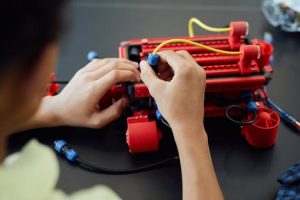Outdoor and Place-Based Education: Learning Beyond the Classroom
In today’s fast-paced world, education has taken on a new form, extending beyond the traditional boundaries of classroom learning. As educators strive to provide a well-rounded education, outdoor and place-based education has become increasingly popular. This approach to learning integrates the natural world, local community, and cultural resources into the curriculum, allowing students to gain knowledge and skills in an authentic and meaningful way. In this article, we will delve into the concept of outdoor and place-based education, exploring its purpose, benefits, and strategies for implementing it in the classroom.
The Purpose of Outdoor and Place-Based Education
The purpose of outdoor and place-based education is to provide students with a hands-on, real-world learning experience that connects them with their surroundings. By engaging with the local community and the environment, students are able to develop a deeper understanding of the world around them and their place within it.
In traditional classroom learning, students are often limited to textbooks and lectures, which can feel disconnected from their everyday lives. Outdoor and place-based education, on the other hand, allows students to see the relevance and practical application of their studies in a tangible way. By bringing learning outside of the classroom, students are able to make connections and draw upon their own experiences to deepen their understanding.
The Benefits of Outdoor and Place-Based Education
1. Engagement
One of the main benefits of outdoor and place-based education is the high level of student engagement it creates. Being in a real-world setting promotes active learning, and students are more likely to be excited and motivated to participate. This active engagement not only leads to a better understanding of the subject matter but also increases students’ overall interest in learning.
2. Hands-on Learning
Outdoor and place-based education provides students with hands-on learning opportunities, which are proven to be highly effective in retaining information. By performing tasks and engaging in activities, students are able to experience the subject matter directly, making it more memorable and meaningful. This hands-on learning approach also allows for more personalized and individualized learning, as students can bring their own interests and experiences into the activities.
3. Holistic Development
Beyond just academic learning, outdoor and place-based education also facilitates the development of important life skills. By working together in a real-world setting, students learn communication, problem-solving, and teamwork skills, as well as develop a sense of responsibility for their surroundings. This holistic development goes beyond the traditional focus on academic achievement, preparing students for success beyond the classroom.
Implementing Outdoor and Place-Based Education in the Classroom
Incorporating outdoor and place-based education into the classroom can seem daunting, but with some planning and creativity, it can be easily integrated into any subject area. Here are a few strategies for implementing this approach to learning:
1. Collaborate with Local Experts
Connecting with local experts and community organizations is an excellent way to bring the real world into the classroom. Field trips, guest speakers, and community service projects are all great ways for students to engage with their surroundings and learn from those who are knowledgeable and passionate about the subject matter.
2. Utilize Technology
Technology can be a helpful tool in enhancing outdoor and place-based education. Students can use digital resources to research and track their findings, create digital maps or presentations, and share their experiences with a wider audience. Technology also allows for virtual field trips and remote learning, making outdoor and place-based education accessible to all students.
3. Incorporate Reflection
Reflection is an essential aspect of outdoor and place-based education. After completing an activity or experience, students should take time to reflect on what they have learned, how it connects to the curriculum, and why it is important. This reflection not only solidifies the learning but also fosters critical thinking skills and self-awareness.
Outdoor and place-based education provides a unique and valuable approach to learning that goes far beyond the classroom walls. By connecting students with their surroundings and engaging them in hands-on, real-world experiences, educators can create a more meaningful and impactful learning journey for their students. By utilizing the strategies mentioned above, educators can incorporate this approach into their curriculum and help students develop a deeper understanding of the world around them.








